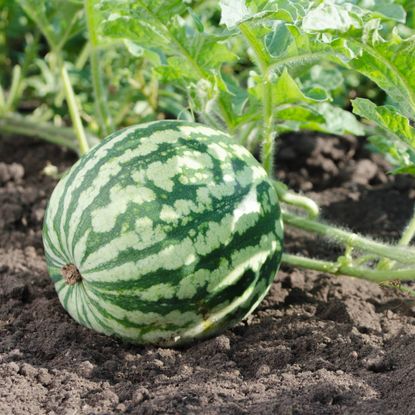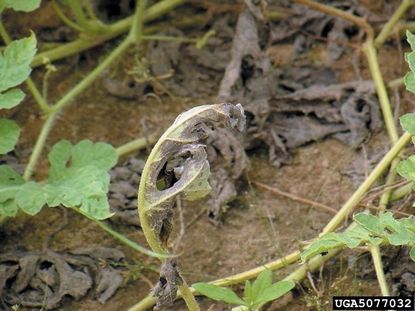Watermelons
Watermelons are symbolic of summertime get-togethers and the staple of nearly everyone’s dessert trays. But how does one grow and care for watermelons in the garden? Find out here. These articles help with growing watermelons, harvesting them and keeping them free of pests and disease throughout the season. You'll even learn about different types of watermelons to suit any garden.
-

How To Pick A Perfectly Ripe Watermelon
Pick the the ripe watermelon from the bunch every time.
By Amy Grant
-
Watermelon ‘King Of Hearts’ – Growing Tips For King Of Hearts Melon Plants
King of Hearts is an excellent seedless watermelon. These melon plants need plenty of sun and heat to produce the big fruits. Try growing a King of Hearts watermelon and forget about the seeds as you eat it like a grown up. Click this article to learn how to grow this melon.
By Bonnie L. Grant
-
Yellow Flesh Black Diamond Info – Yellow Black Diamond Watermelon Growing
Watermelons are some of the most quintessential summer fruits out there. One popular option is the Black Diamond Yellow Flesh melon. Click here to learn more about growing Yellow Flesh Black Diamond watermelon vines in the garden.
By Liz Baessler
-
All Sweet Watermelon Plant Info – Learn How To Grow All Sweet Melons In Gardens
When you get right down to it, there are a lot of watermelon varieties to choose from. But what if all you want is a good, vigorous, delicious, quintessential watermelon? Then watermelon "All Sweet" might be what you're after. Learn more in this article.
By Liz Baessler
-
Ali Baba Watermelon Care: Tips On Growing Ali Baba Melons
Not all watermelons are created equal, and taste and texture can vary among cultivars. With so many gardeners listing these as their favorites, it only makes sense to try growing Ali Baba melons. Click here for more information on Ali Baba watermelon care.
By Teo Spengler
-
Tastigold Melon Care: Planting Tastigold Watermelon Vines
If you’ve never sampled a Tastigold watermelon, you’re in for a big surprise. On the outside, Tastigold melons look much like any other melon. However, the inside of a watermelon Tastigold is a beautiful shade of yellow. Interested in giving it a try? Click here for more info.
By Mary H. Dyer
-
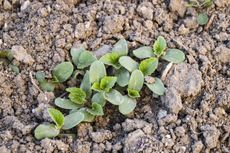
Watermelon Damping Off Info – What Makes Watermelon Seedlings Die
Damping off is a problem that can affect many different species of plants. It can be a particular problem with watermelons that are planted under certain conditions. Click here to learn more about what makes watermelon seedlings die and how to prevent damping off.
By Liz Baessler
-
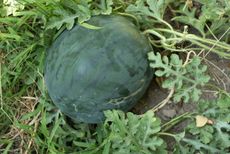
Fordhook Watermelon Care: What Is A Fordhook Hybrid Melon
Some of us expect to grow watermelons this season. We know they need plenty of growing room, sunshine, and water. Perhaps we’re not sure which type of watermelon to grow though, since there are many to choose from. Why not try Fordhook. Learn more here.
By Becca Badgett
-
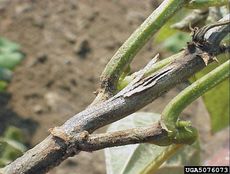
What Is Watermelon Charcoal Rot – Treating Charcoal Rot In Watermelons
When you have watermelons with charcoal rot in your garden, don’t count on getting those melons to the picnic table. This fungal disease usually kills the plants. If you are growing melons, click here for more information about charcoal rot and what to do when you see it.
By Teo Spengler
-
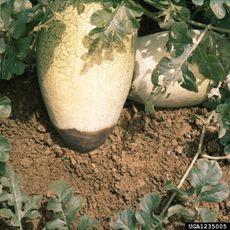
Watermelon Bottom Turns Black: What To Do For Blossom Rot In Watermelons
Watermelons were never meant to be eaten alone. But what do you tell friends and family when the watermelon bottom turns black? Read here to learn more about watermelon blossom end rot.
By Kristi Waterworth
-
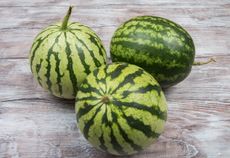
Little Baby Flower Melon Info: Caring For Little Baby Flower Watermelons
If you love watermelon but don’t have the family size to devour a huge melon, you’ll love Little Baby Flower watermelons. What is a Little Baby Flower watermelon? Click here to learn how to grow watermelon Little Baby Flower and about Little Baby Flower care.
By Amy Grant
-
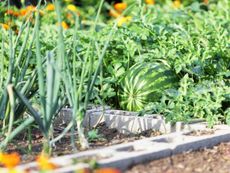
Companion Planting For Watermelon In The Garden
Perhaps you're familiar with the three sisters style of gardening. This technique can also be used with other plants, such as watermelon.
By Laura Miller
-
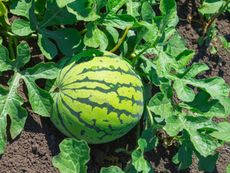
Watermelon Cannonballus Disease – What Causes Watermelon Root Rot
Watermelon root rot is a fungal disease caused by the pathogen Monosporascus cannonballus. Also known as watermelon vine decline, it can cause massive crop loss in affected plants. Learn more about the devastating disease in this article.
By Darcy Larum
-
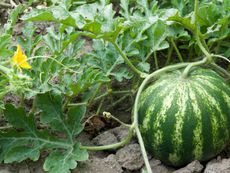
Watermelon Bacterial Rind Necrosis: What Causes Watermelon Rind Necrosis
Watermelon bacterial rind necrosis sounds like an awful disease you could spot on a melon from a mile away, but no such luck. Bacterial rind necrosis disease usually is visible only when you cut open the melon. You can learn more about it in this article.
By Teo Spengler
-
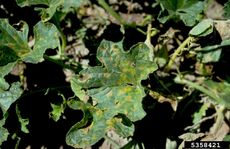
Watermelon Alternaria Leaf Spot Control – Treating Leaf Blight Of Watermelon Crops
Alternaria leaf blight is a common fungal disease of plants in the cucurbit species, which includes gourds, melons, and squash. Watermelons are specifically affected by this disease. In this article, we will take a closer look at the symptoms and control strategies.
By Darcy Larum
-
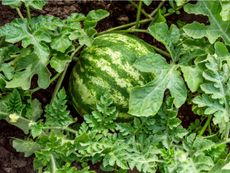
Watermelon Diplodia Rot: Managing Stem End Rot Of Watermelon Fruits
Fungal diseases such as diplodia stem end rot on watermelons can be especially disheartening as the fruits you?ve patiently grown all summer suddenly seem to rot right off the vine. Click here to learn more about recognizing and treating stem end rot of watermelon.
By Darcy Larum
-
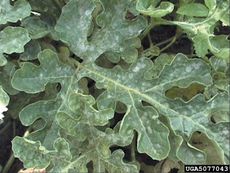
Watermelon Powdery Mildew Control – Treating A Watermelon With Powdery Mildew
Powdery mildew in watermelons is one of the more common illnesses that affect this popular fruit. You can use management strategies to control or prevent an infection or apply fungicides to treat affected plants. This article can help with that.
By Mary Ellen Ellis
